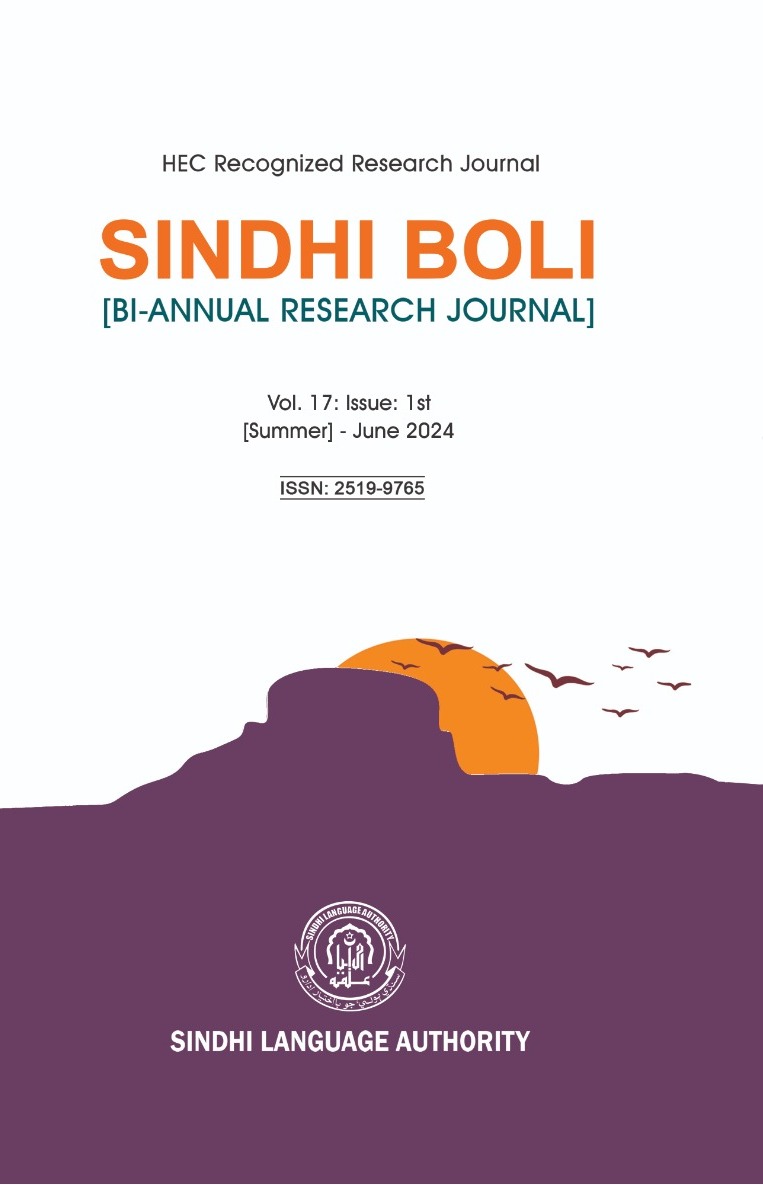The Standardized Registration of Sindhi Letters and the Use of Standardized Unicode
Abstract
Abstract
alphabet and Unicode have caused confusion. A key issue is This research paper examines the challenges of developing and standardizing the Sindhi language in the current era of computer and information technology. Over the last fifty years, the world has witnessed rapid technological progress, setting unprecedented milestones in digital invention and innovation. The evolution of electronic information delivery systems, which continue to change at an accelerating pace, underscores the urgent need for the standardization of the Sindhi language. This standardization is crucial, as technological advancements have turned the world into a global village, placing Sindhi in direct competition with other global languages. To fully leverage modern technological resources, establishing a national standard is imperative. Without it, Sindhi risks falling behind in its development compared to other languages. Currently, like hundreds of other languages, Sindhi relies on Unicode encoding for the exchange of information and ideas via the Internet. While Sindhi has successfully entered the Information Age, inconsistencies between the standard Sindhi that Unicode has allocated multiple code points for the letter "هـ". As a result, different keyboards and fonts use varying Unicode characters for the same letter, leading to discrepancies. Words that appear identical on screen or in print are, in fact, stored differently in digital formats. Moreover, two essential letters in the standard Sindhi alphabet— Jhae (جھ) and Ghaaf (گھ)—are entirely absent from Unicode, hindering proper usage and making it difficult to search for words in online dictionaries. This issue is also evident in the Sindhi Language Authority's online dictionary, accessible at https://dic.sindhila.edu.pk/.These inconsistencies will pose challenges for future language processing systems, such as Text-to-Speech systems for Sindhi, and will affect the creation of essential reference materials, such as thesauri. In this paper, I argue that, beyond standardizing Unicode usage for Sindhi, it is essential to develop a dedicated code for Sindhi characters and register it with both the International Organization for Standardization (ISO) and the Internet Assigned Numbers Authority (IANA). Achieving this, however, requires the active involvement of the Sindhi Language Authority.
Keywords: Sindhi language, technological advancements, Unicode, Standardization, language characters and letters, ISO
Downloads
Published
Issue
Section
License
Copyright (c) 2025 Copyright ©SINDHI BOLI All Rights Reserved

This work is licensed under a Creative Commons Attribution-NonCommercial 4.0 International License.
Copyright provides the exclusive legal right to produce, reproduce, and publish original research work. As the Sindhi Boli Journal is an open-access journal, authors retain ownership of the copyright for their articles.
Under the journal's open-access license, users are allowed to download, print, extract, reuse, archive, and distribute articles, provided that proper credit is given to the authors and the source of the work. This license ensures that the author's research is widely accessible and can be included in any scholarly archive, maximizing its reach and impact.
For more information on reuse rights or permissions, please contact the editorial board.
Sindhi Boli Journal supports the free exchange of ideas and encourages academic and educational use of its material under fair use guidelines, provided that appropriate credit is given to the original authors and the journal.
Copyright is the exclusive legal right to produce, reproduce, and publish original research work. As the Progressive Research Journal of Arts and Humanities (PRJAH) is an open-access journal, authors are asked to retain ownership of the copyright of their articles. The license permits any user to download, print out, extract, reuse, archive, and distribute the article, so long as appropriate credit is given to the authors and source of the work. The license ensures that the author's article will be available as widely as possible and that the article can be included in any scholarly archive.


